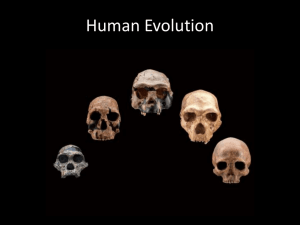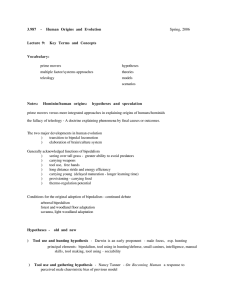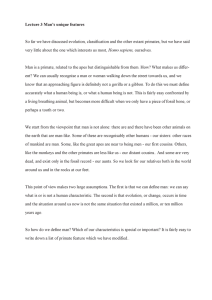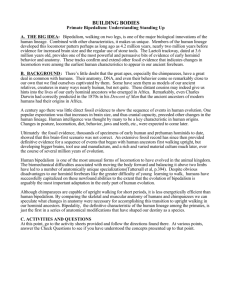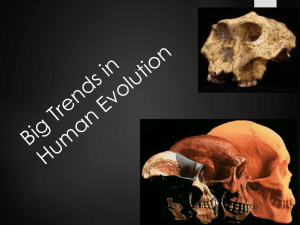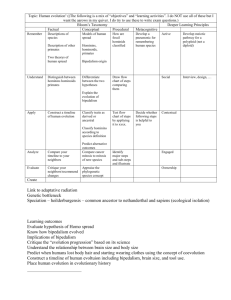Hypotheses for Bipedalism
advertisement
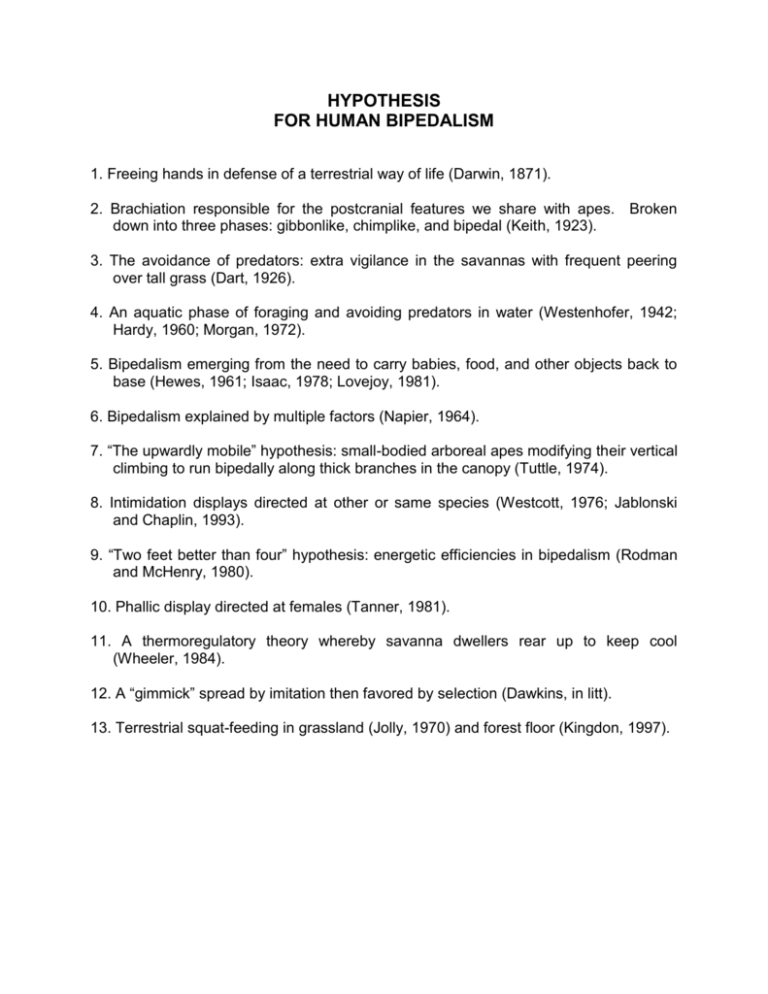
HYPOTHESIS FOR HUMAN BIPEDALISM 1. Freeing hands in defense of a terrestrial way of life (Darwin, 1871). 2. Brachiation responsible for the postcranial features we share with apes. Broken down into three phases: gibbonlike, chimplike, and bipedal (Keith, 1923). 3. The avoidance of predators: extra vigilance in the savannas with frequent peering over tall grass (Dart, 1926). 4. An aquatic phase of foraging and avoiding predators in water (Westenhofer, 1942; Hardy, 1960; Morgan, 1972). 5. Bipedalism emerging from the need to carry babies, food, and other objects back to base (Hewes, 1961; Isaac, 1978; Lovejoy, 1981). 6. Bipedalism explained by multiple factors (Napier, 1964). 7. “The upwardly mobile” hypothesis: small-bodied arboreal apes modifying their vertical climbing to run bipedally along thick branches in the canopy (Tuttle, 1974). 8. Intimidation displays directed at other or same species (Westcott, 1976; Jablonski and Chaplin, 1993). 9. “Two feet better than four” hypothesis: energetic efficiencies in bipedalism (Rodman and McHenry, 1980). 10. Phallic display directed at females (Tanner, 1981). 11. A thermoregulatory theory whereby savanna dwellers rear up to keep cool (Wheeler, 1984). 12. A “gimmick” spread by imitation then favored by selection (Dawkins, in litt). 13. Terrestrial squat-feeding in grassland (Jolly, 1970) and forest floor (Kingdon, 1997).


